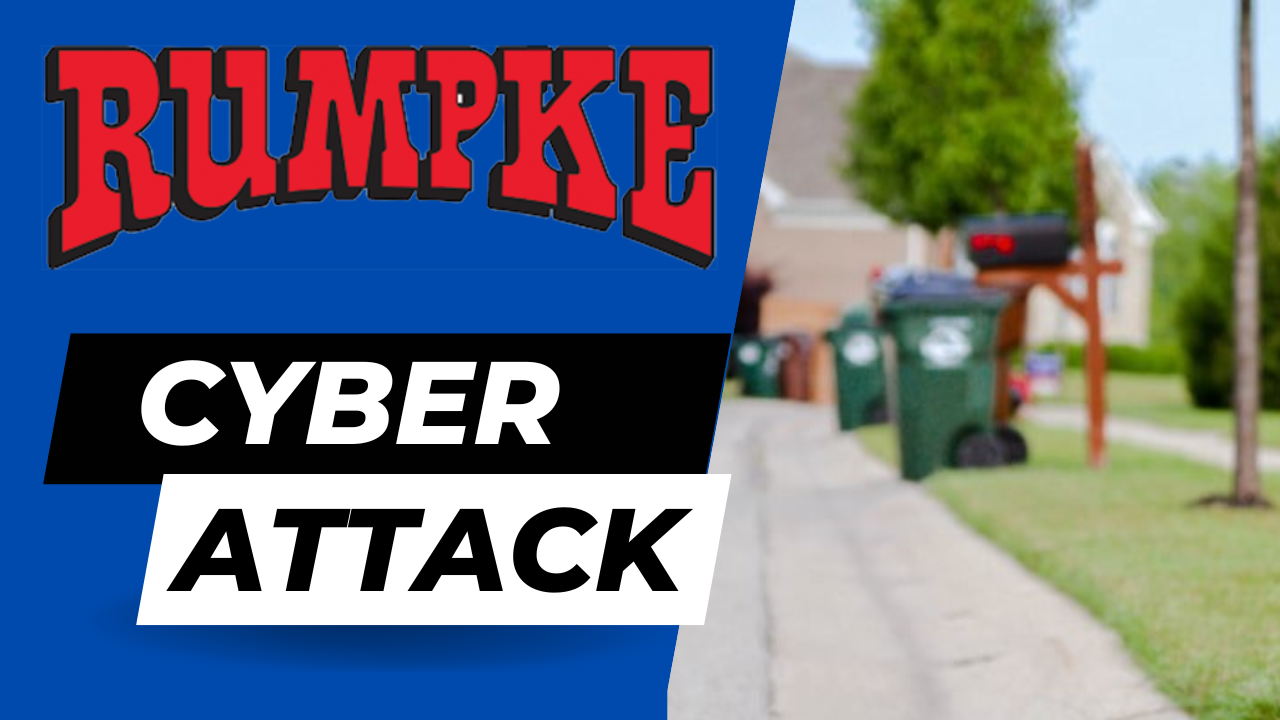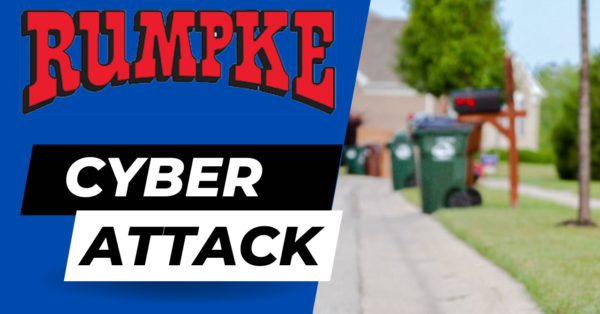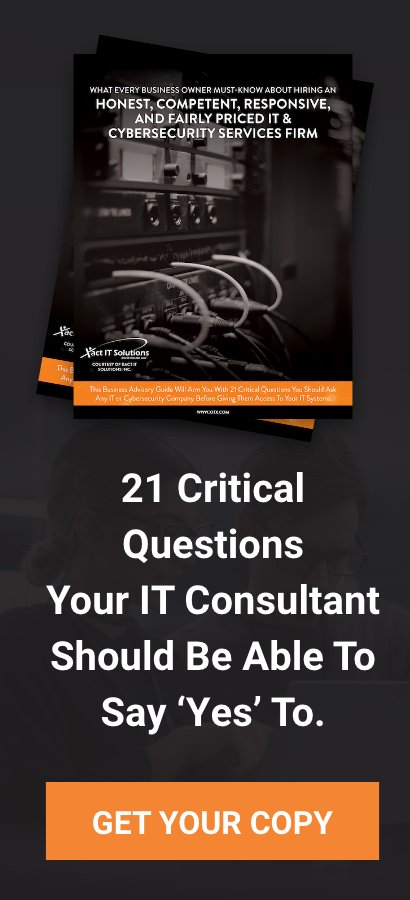In the ever-evolving world of cybersecurity, we frequently hear about attacks on tech giants, banks, or government agencies. But increasingly, essential service providers in less obvious industries are finding themselves in the crosshairs of cybercriminals. Recently, Rumpke, a prominent waste and recycling company in Ohio, experienced a disruptive cyberattack. For a company responsible for waste management, serving thousands of residential and commercial clients across multiple states, the repercussions of this breach could be far-reaching.
In this post, we’ll break down what happened to Rumpke, why companies like it are increasingly targeted, and most importantly, what lessons businesses in every sector can learn to protect themselves against such attacks.
Background on Rumpke and Their Role in the Community
Founded in 1932, Rumpke Waste & Recycling has been an integral part of waste management across Ohio and the Midwest for decades. Headquartered in Colerain Township, Ohio, just outside Cincinnati, Rumpke serves a vast range of clients, from residential households to commercial and industrial facilities. Beyond just waste collection, Rumpke plays a significant role in recycling efforts and environmental sustainability, adding to its importance in local communities.
Because Rumpke’s services are foundational to public health and sanitation, any disruption in their operations can create a domino effect, affecting thousands of households and businesses reliant on regular waste collection and recycling services. And as it turns out, this foundational role made them a perfect target for cybercriminals looking to disrupt essential services.
What Happened: Understanding the Attack on Rumpke
Earlier this year, Rumpke reported a significant cyberattack that brought parts of its operation to a standstill. The attack involved ransomware—a type of malicious software designed to encrypt data, making it inaccessible until a ransom is paid. This kind of attack is common in the world of cybersecurity, with cybercriminals regularly targeting companies that rely on real-time operations and are more likely to pay a ransom quickly to restore functionality.
Although specific details about the ransom demand remain undisclosed, the incident sheds light on the tactics used by modern ransomware gangs to extract large sums of money from their victims.
Why Are Waste Management Companies Targets for Cybercriminals?
When we think of sectors targeted by cybercriminals, the waste management industry might not immediately come to mind. However, this attack on Rumpke highlights that no industry is immune. There are several reasons why waste management and other essential service providers have become attractive targets for cybercriminals:
- Essential Service Disruption
Waste management is an essential service that, when interrupted, can quickly lead to public health and environmental issues. This urgency puts enormous pressure on companies to get systems back online as quickly as possible, which can make them more likely to pay a ransom to avoid operational delays.
- Lack of Cybersecurity Investment
Compared to industries like finance or healthcare, companies in the waste management sector may not have invested as heavily in cybersecurity. This is partly because of a historic focus on physical safety over digital safety, leaving some waste management firms unprepared for sophisticated cyber threats.
- Targeted Ransomware Groups
Organized cybercrime groups, like the one that targeted Rumpke, are known to strategically select industries where there is a high likelihood of ransom payment. In recent years, ransomware gangs have shifted from targeting general targets to specific sectors where disruption can be costly, and where companies are more likely to pay up.
The Consequences of the Cyberattack on Rumpke
For Rumpke, this attack disrupted operations, potentially affecting thousands of customers who rely on their waste collection services. And while Rumpke hasn't disclosed the full extent of the damage or if any data was compromised, ransomware attacks often impact both operational systems and sensitive data.
Operationally, a disruption in waste collection services can lead to customer dissatisfaction and even regulatory scrutiny, especially if the company fails to communicate transparently with affected customers. Financially, the costs associated with downtime, ransom payments, and potential fines can be immense, making recovery even more challenging.
Ransomware Explained: What Businesses Need to Know
To understand what happened to Rumpke, it’s essential to understand ransomware itself. Ransomware is a type of malware that encrypts data on the infected system, rendering it unusable. The cybercriminals then demand a ransom—often in cryptocurrency—to provide the decryption key that unlocks the data. There are two primary types of ransomware attacks:
- Locker Ransomware: This ransomware locks users out of their systems entirely.
- Crypto Ransomware: This type encrypts the files, making them inaccessible until a ransom is paid.
In Rumpke’s case, the attackers used ransomware to encrypt critical files, likely with the goal of holding their operational data hostage until payment was made.
Lessons from Rumpke’s Attack: Protecting Your Business from Cyber Threats
The Rumpke attack serves as a wake-up call for businesses across all sectors to reassess their cybersecurity defenses. Here are several key lessons every organization can take away:
- Prioritize Cybersecurity in Essential Service Industries. As demonstrated in Rumpke’s case, essential service providers are prime targets for cybercriminals. Therefore, industries like waste management, utilities, and healthcare need to consider cybersecurity as an operational priority.
- Implement Robust Backup Solutions. One of the most effective defenses against ransomware is having a robust backup and recovery plan. Regularly back up critical data and store it in an isolated environment—this is often referred to as the “3-2-1” backup strategy: keep three copies of your data on two different types of media, with one copy stored offsite.
- Strengthen Employee Training and Awareness. Many ransomware attacks begin with phishing emails that trick employees into clicking on malicious links or downloading infected files. Regular training on how to recognize phishing attempts can significantly reduce the likelihood of an attack.
- Deploy Endpoint Detection and Response (EDR) Solutions. Investing in advanced endpoint security solutions like EDR can help detect and respond to threats in real time, minimizing the damage of a ransomware attack. EDR solutions provide enhanced visibility into network activity, allowing security teams to identify and isolate suspicious activities before they escalate.
- Use Multi-Factor Authentication (MFA). MFA adds an extra layer of protection by requiring a second form of verification before granting access to systems or sensitive data. By implementing MFA across all systems, businesses can make it harder for unauthorized users to access critical accounts.
- Partner with a Cybersecurity Firm. For many companies, building a robust cybersecurity infrastructure is challenging due to limited resources. Partnering with a cybersecurity provider can provide access to specialized expertise, threat intelligence, and cutting-edge tools. This partnership can make a significant difference in a company’s ability to defend against cyberattacks.
Building a Cybersecurity-First Culture
It’s not enough to rely solely on technology; companies also need to foster a cybersecurity-first culture. In Rumpke’s case, as in any other industry, this means creating an environment where employees understand the value of cybersecurity, adhere to best practices, and know how to respond to potential threats.
a. Conduct Regular Security Audits
Frequent cybersecurity assessments are essential to identify and address vulnerabilities in an organization’s network. Companies should conduct these audits annually at a minimum, or even quarterly, depending on their risk profile.
b. Encourage Transparent Communication
Encourage employees to report suspicious activity or potential breaches without fear of reprisal. By fostering an open and transparent environment, companies can respond faster to threats and avoid the escalation of incidents.
c. Align Cybersecurity with Business Goals
It’s also crucial to align cybersecurity initiatives with business goals to ensure that cybersecurity becomes part of every decision. By embedding cybersecurity into the organizational culture, companies make it clear that protecting their data and operations is a shared responsibility.
Final Thoughts: Adapting to an Increasingly Risky Digital Landscape
The cyberattack on Rumpke is a powerful reminder that even companies in less obvious industries must prioritize cybersecurity. From ransomware to phishing, today’s threat landscape is complex and constantly evolving. The key takeaway for businesses in every sector is clear: no one is immune from cyberattacks, and every organization must take proactive steps to safeguard their data, operations, and reputation.
As cybercriminals continue to target critical infrastructure and essential services, companies must take a comprehensive, multi-layered approach to cybersecurity that combines technology, employee training, and a culture of security awareness.
The cost of inaction is too high, and as demonstrated in Rumpke’s case, the effects of a cyberattack can reverberate through communities and industries alike. Don’t wait until it’s too late—invest in cybersecurity now to protect your business, your clients, and your community.
By following these guidelines, businesses across all industries can better defend themselves against ransomware attacks and other cyber threats. Remember, cybersecurity isn’t just an IT responsibility; it’s an organization-wide priority that requires commitment and vigilance at every level.
If you’d like to learn more about how to secure your organization, feel free to explore our resources or reach out to our team at Xact IT Solutions. Stay safe, stay informed, and stay cyber-secure.





You must be logged in to post a comment.